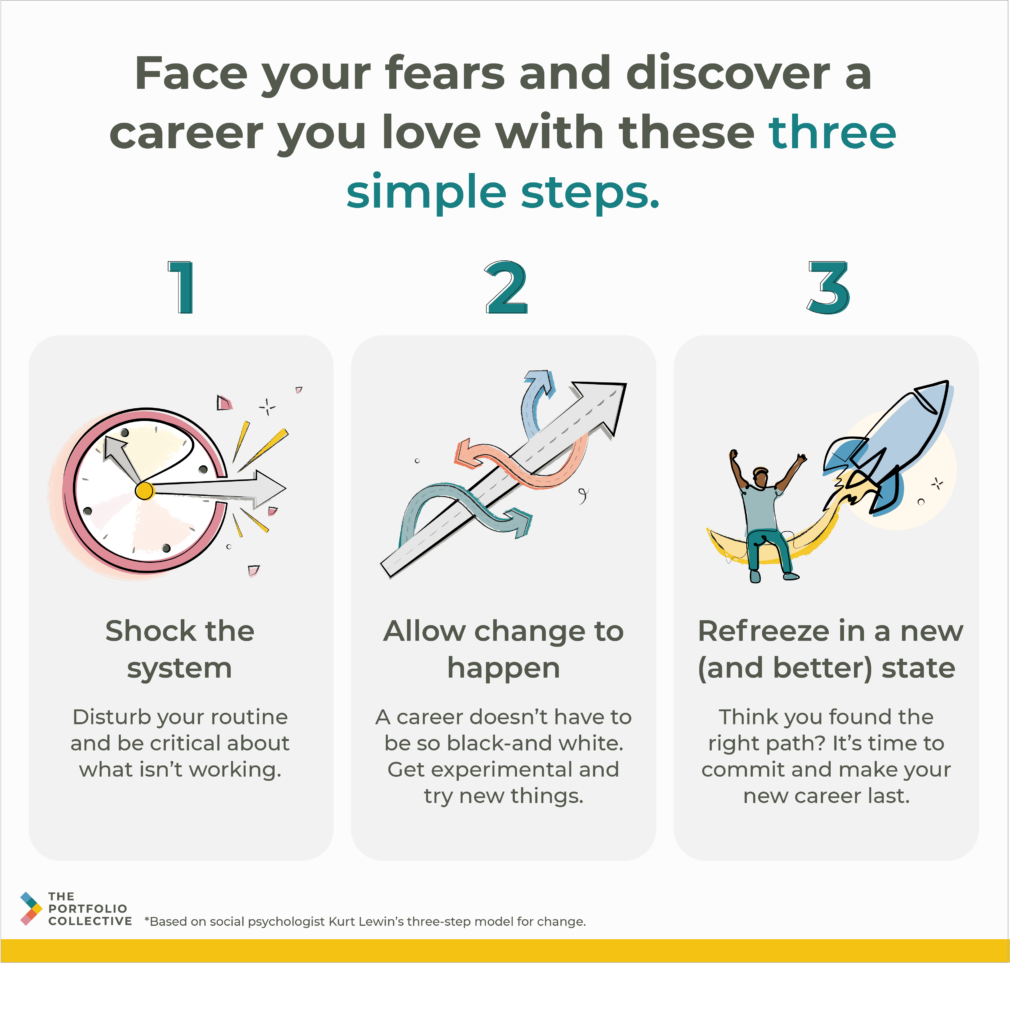Stephanie Dotto
When it comes to careers, too many people allow themselves to get stuck in a rut. You start to believe that you don’t have to enjoy your job – it just exists to pay the bills. Life gets in the way and you convince yourself that change is risky. That’s how you get trapped doing something you don’t love.
So maybe you’re sitting there thinking you want to start a portfolio career but you’re scared of what comes next. Or perhaps you already have a portfolio career and you’re eager to explore something new within that. True, it’s important to protect your near-term financial stability, but you also need to consider your happiness and fulfilment.

The most important thing to realise is that it’s achievable for happiness and success to work in tandem. Done right, a portfolio career is a lucrative option. More often than not, you’ll come out the other side actually making more money than you did in a permanent 9-to-5 position. Don’t let indecision and inertia hold you back – it’s time to squash those fears head on.
FOMO and the uncertainty of choice
Fear is a huge (and necessary) part of the decision-making process. Anytime you’re faced with a big life choice, you instantly tick through all the different things that could go wrong. We all do it and we all fall victim, at one time or another, to the fear of missing out (FOMO) or of making the wrong decision.

What if you left your current job and you missed your colleagues and the comfort of doing work that was familiar? Or what if you start offering a service that you weren’t totally sure about and felt like you made the wrong choice? The good news is that portfolio careers are extremely flexible. If you aren’t quite ready to leave your old job, you don’t have to.
You can keep your 9-to-5 and start a side-hustle. Or you can drop down to part time and take on other other projects. You can even have a multi-hyphenate career with several diverse jobs happening simultaneously.
In other words, you don’t have to miss out. If you’re uncertain about changing your life completely, then take it in smaller steps. Not everyone decides to jump headfirst into a portfolio career. Some people ease in slowly, and that’s fine too.
There’s no set of blueprints you need to follow, which means you can create a career that works for you and your particular situation.
It helps to disturb your routine
In the early 20th century, German-American social psychologist Kurt Lewin developed a three-step model for change designed to challenge the status quo and inspire both individuals and groups to transform their behaviours. He argued that individuals have a tendency to resist change, often becoming “frozen in place” despite favourable opportunities.
In order to break away from this, one would need to:
1. Embrace a shock/disturbance in order to unfreeze
2. Allow change to happen as a result of that shock
3. Refreeze in a new and different state
Put simply, shocking your routine can nudge you out of your rut. Let’s imagine you’re a block of ice. If you want to reshape yourself into something different like a star or a disk, you need to unfreeze the ice, mould your new shape, then refreeze in that new form.
In order to shake up your career, you first need to recognise why you’re stuck and break free of the doubts and insecurities that have kept you frozen.
Ask yourself:

What’s really holding me back?

What will I lose if I don’t take a chance and embrace a career I’m passionate about?

Is my financial security really at stake or am I simply afraid of the unknown?

How do I minimise short-term financial risk while launching the career that I really want?

What sort of portfolio career will work for my needs and lifestyle?
Don’t let imposter syndrome get in the way of what could be a successful and exciting portfolio career. The new working style may be different to what you’re used to, but there’s a reason why millions of people are making the shift into portfolio work. It’s flexible, it’s empowering and it’s lucrative – sometimes extremely so.
In fact, collaborative technologies and enhanced connectivity have influenced a drastic rise in global self-employment rates, with 20-30% of the working population in the EU and US choosing more independent and on-demand work – that’s 162 million working-aged people. Portfolio work is not just a trend – so don’t let your insecurities hold you back from being part of this global revolution.
List out all your fears in black and white and do some in-depth research. You’ll be surprised by what you learn about the employment market and about yourself.

It helps to break things down into bite-sized pieces
One of the things that makes career change and development feel so overwhelming is the fact that we tend to look at the whole picture. We instantly try to envision the end-goal, not accounting for all the steps and milestones we pass through on the way.
Sure, the idea of completely changing your working style or embarking on a new aspect of an already developed portfolio career can seem a bit bonkers. But remember, that sort of change doesn’t happen overnight. Too often, we fixate on the peak of the mountain and forget about the tracks we overcome along the way.

Start thinking about the short-term wins. The more milestones you set and pass, the more momentum you create. Do you already have a clear idea in your head of the type of portfolio career you’d like to have or the new venture you want to embark on? That’s good. From there, it helps to:

Research that particular career or service to see what the market looks like

Speak to others who are doing the same thing or something similar – our community is a great place to start

Join as many workshops and networking events as you can (ideally free ones) so you’re not alone on this journey

Create a roadmap with achievable milestones – we recommend breaking it down into daily, weekly and monthly goals so you can track your progress and celebrate your successes
Once you have a better idea of what to expect and what your new workload could look like, it’s easier to actually start doing the work and building up a portfolio of clients. Start small with something like optimising your LinkedIn or TPC profile. From there, you can work your way up to creating a website, then landing a client, then building a sales pipeline and so forth.
It’s time to find your community
Any new business venture can be overwhelming when you’re doing it solo. That’s why community is such an important part of having a portfolio career. There’s no reason to work in total isolation – and you don’t have to. With communities like The Portfolio Collective, you can collaborate with other independent talent, find a mentor and even take part in virtual events that keep you connected to a wider network of professionals in the same situation as you.
Having other people to hold you accountable is so important. So share your milestones, celebrate your successes and bond over mutual challenges. If you’re having fears, other people probably are too, and talking it out can give you a whole new perspective on the things that are holding you back.
Think this sounds like the right path for you? Come along to our monthly Community Welcome Call for new members to find out what a portfolio career could look like and how The Portfolio Collective can help you take those first steps towards professional success – and don’t forget to connect with our community!




One response to “How to move through career indecision”
this article is EVERYTHING! it so accurately depicts my entire inner monologue as I debate, explore, and let’s face it, freak out over the prospect of a portfolio career versus the stability of my long time corporate career. Reading this was inspiring and makes venturing into this space a little less daunting & a little more supported… thank you Stephanie Dotto for your BANG ON piece!!